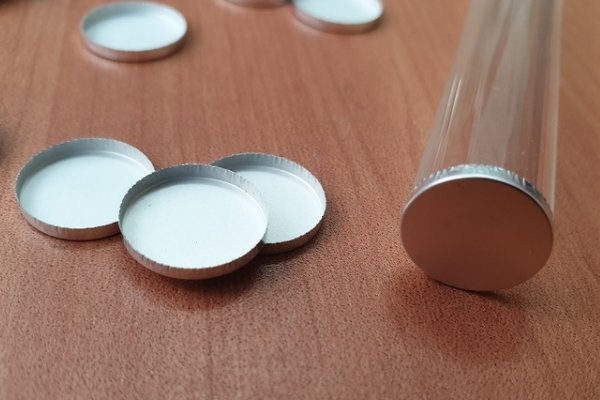This is SealerOn’s 5-head capless induction sealing machine. With this, dry products packed into glass can be induction sealed—even if the package has a metal lid. The machine fills the glass jars, adds a desiccant and then the Capless Induction Sealing Process takes place. Finally, an attractive metal cap is placed over the sealed top of the glass jar.
Products are finished in a high-end glass package with tamper evidence and a moisture and oxygen barrier with close to zero transmission rates.
How does our 5-Head Capless Induction Sealing Machine do it?
Rolled induction sealing material is cut and applied to the top sealing surface of the vial. Our unit has 5 filling sealing heads allowing for higher processing speeds. The sealing cycle then lasts 0.2 to 0.4 seconds introducing only minimal heat energy to produce the seal.
Key Benefits to Capless Induction Sealing
- 100% visual inspection of the seal is possible.
- More pressure can be applied at the time of sealing resulting in a better and more even contact during the induction sealing cycle.
- For single-use containers, the process can eliminate the need for multi-layer cap lining or even eliminate the need for a cap altogether.
- For containers with metal/metalized plastic caps, tamper evidence is still achievable along with a moisture and oxygen barrier with close to zero transmission rates.
Connect with Us
With our unique expertise and range of capless induction sealing equipment, we can solve your product challenges—whether they be on a smalll or large scale! Allow us to guide and supply you with the most cost-effective and reliable induction sealing materials to suit your process.
Contact us here.









